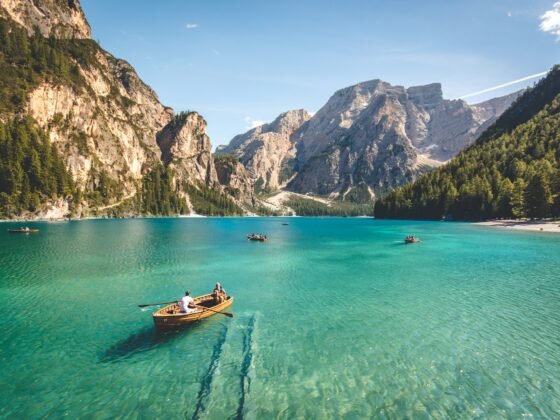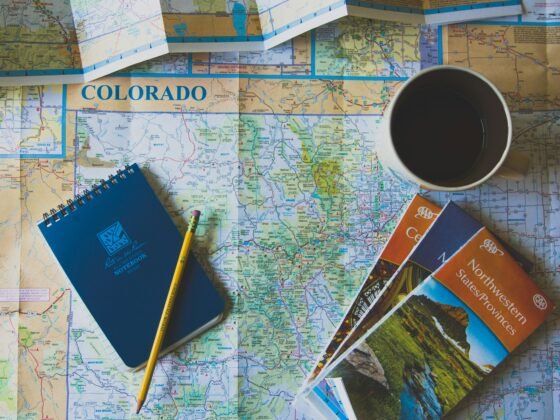Avid cyclists will typically bring their bikes when going on vacation, for both comfort and assurance.
Apart from being an excellent way to get in some exercise, bringing your own bike while traveling will help whether you will be going through cities or experiencing more of the outdoors.
However, cycling within a city is markedly different from long-distance rides along biking trails. To fully prepare for either of these two settings, you will need to plan ahead and pack the right kinds of clothing.
This quick read will discuss how to adjust your cycling clothes for a more comfortable and convenient ride while abroad.
Why You Need to Adapt Your Clothing to the Situation
Packing the right kind of clothing will help you experience a safer and more comfortable ride.
For example, a thin windbreaker might be suitable for a quick ride through a bustling urban center, but you will need to upgrade to something thicker and warmer if you plan to cycle around a colder country.
You can pick up clothes from Sigr.cc to prepare for your trip and stay sleek and comfortable during your ride.
Additionally, having the right clothes before setting out can save you from problems like inadequate rain protection or having to pick up new clothes at your destination.
How to Gear up for Cycling in Different Settings
Before setting off on a trip, take some time to adjust your gear. A few considerations will help ensure you are ready to cycle around your destination.
For Urban Cycling
If you intend to make a few rounds around your accommodations during downtime on a trip, your standard cycling outfit will be fairly simple.
Stick to a pair of cycling gloves, a breathable jacket, waterproof pants, and comfortable cycling shoes. These will be light and easy to pack and should provide enough protection during a sunny day.
Gloves help riders keep their grip on their handlebars regardless of sweat and warm up their hands during winter rides.
When packing a jacket, ensure it is slightly loose so it can accommodate extra layers in case you need more insulation.
If your pants are slightly baggy or stretched out from use, utilize braces or clips to tighten them or roll them into your sock. This will prevent them from getting caught in your bike chain.
However, if you intend to spend an entire day in the saddle, put on a pair of padded cycling shorts instead. This will prevent issues like saddle sores and chafing.
When opting for cycling shorts, ensure they are made from moisture-wicking fabric.
For Gravel Cycling
Gearing up for gravel cycling is slightly different from urban cycling gear due to the nature of the terrain.
Instead of prioritizing speed and aerodynamics, gravel cycling gear can include slightly looser clothing for comfort and more pockets for improved carrying capacity.
Your kit for a day’s worth of riding can include a t-shirt or jersey, an insulated jacket, cargo bib shorts and gravel shoes.
A jersey or t-shirt made from sweat-wicking materials will be more comfortable while riding, and an insulated jacket will be handy when traveling in colder countries.
Cargo bib shorts are a common option, but they can be swapped out for baggy shorts and padded underwear for additional comfort.
Gravel shoes should have cleats for better grip and be worn with thick reinforced socks for protection.
For Mountain Cycling
Mountain trails typically have rougher terrain and more obstacles, which means mountain cyclists will need slightly more protection than gravel and urban cyclists.
Cyclists on vacation who intend to hit a mountain trail will need a helmet, goggles or glasses, jersey, and either padded shorts or pants.
Mountain biking helmets have thicker shells and usually have fewer vents to offer greater protection. Rougher trails may necessitate a full-face cycling helmet.
Glasses and goggles are worth investing in because they will reduce the sun’s glare and stop any dust or debris you kick up from irritating your eyes.
Long-sleeved mountain jerseys are practical choices that will help against stray branches and nettled paths. As for shorts, get baggy shorts with room for extra padded mesh shorts underneath.
Some extra protection like long socks, knee pads, and gloves will also be useful. Grab some waterproof socks for mud protection and knee pads to avoid serious injuries in case of a fall.
Finally, get mountain biking shoes with a large tread for better grip on slippery surfaces.
Tips on Layering Clothes Before Cycling
Look through these quick tips before setting out with your kit on and bike in hand.
- Keep the Climate in Mind: Unless snow is falling or you are going to a colder country, you will typically only need two layers while riding. Your base layer should sit close to the skin and is mainly for moisture-wicking.
- Prioritize Breathability: All layers of your cycling clothing should be breathable and sweat-wicking to prevent you from sweating too much mid-ride.
- Prepare for Moisture From All Over: Depending on how hard you push yourself, you will typically start sweating while cycling, causing moisture from within. Add the possibility of rain or fog, and your clothes may be damp all over. Get clothes made from effective moisture-wicking fabric to prevent this.
Common Fabrics Used in Cycling Gear
Cycling gear comes in different forms, with some materials offering notable advantages over their counterparts.
Merino Wool
This wool is prized for being both warm and odor-resistant, but it is typically priced to match those benefits.
Unfortunately, they can take longer to dry and may be less durable than other materials.
Many products use a blend of Merino wool and other synthetic materials for a stretchier product.
Polyester and Nylon
These synthetic materials are known for lasting reasonably long, and will quickly conform to your body shape. They also dry faster than Merino wool and are more durable.
Conversely, they will pick up smells faster and are not as warm as wool.
Essential Cycling Gear
Some pieces of cycling equipment are essential or very handy to have regardless of your destination.
Remember to pack these basics before heading out on your next ride.
- Helmet: This piece of equipment is crucial to staying safe, regardless of your cycling destination or the climate there. Commuter helmets are best suited for urban cycling thanks to their reflective materials and light design, while mountain-biking helmets are designed to offer maximum protection in case of falls on the trail.
- Water Bottle: Aim to stay hydrated while on the road, especially if you are cycling around a country with a tropical climate. Depending on the size of your bike’s bottle cage and the length of your ride, you may have to make do with a 550mL bottle, or get a larger one.
- Cycling Gloves: A good pair of gloves will stop any problems with sweaty palms, and help you grip your handlebars regardless of the weather. Make sure they are snug around your wrists.
- Mudguard: These handy tools will help keep mud, snow, and rain from splashing upwards during your ride. If your frame has mudguard eyelets, opt for a full mudguard. Otherwise, get a lightweight clip-on mudguard for quick protection.
- Jacket: Take note of the weather forecast and climate at your destination, and pack a jacket to match. If you plan to bike in winter or windier areas, bring a thicker jacket. In warmer areas, a thin windbreaker will suffice. Regardless of the climate, make sure your jacket is waterproof.
- Safety Light: Visibility is important in cities, which are filled with plenty of accident-prone areas, pedestrians, vehicles, and fellow cyclists. It is equally useful on mountain trails since it can help cyclists avoid obstacles during low-light or nighttime rides. Pack a powerful headlight and a blinking tail light for visibility in all settings.
Wear the Right Type of Clothing for Your Trip
Whether you are gearing up for a brisk morning ride during your travels or planning to ride along dusty trails, remember to pick your clothing choices appropriately.
Urban cycling, gravel biking, and mountain biking all have different demands, and bringing a single outfit will ensure you are as prepared as can be for your ride.
Regardless of where you plan to ride, remember to invest in high-quality apparel that can take the rigors of riding and keep you comfortable.
Image: Unsplash, Coen van de Broek












